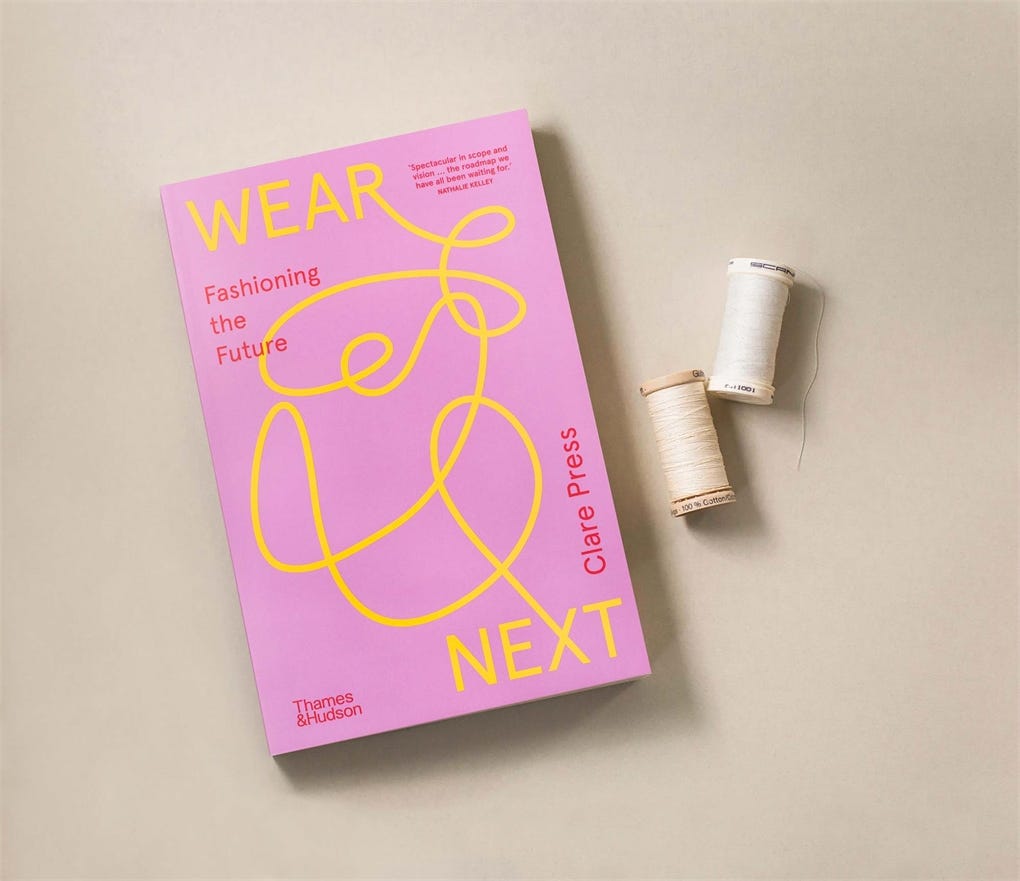February in Fashion, Condensed.
Remake's 2024 Fashion Accountability Report, the best theory on why people buy fashion, and what if there isn't a business case for sustainability?
Hello there,
Apologies for the slightly delayed newsletter this month! The London Lurgy has struck me down for the past week and could barely write my name, let alone a newsletter. But here we are! Thanks for waiting for me.
The big news in February was the bankruptcy of Renewcell. This Swedish textile-to-textile recycler was oft hailed as one of the big shiny solutions to fashion’s circularity problem (the problem being that there is essentially no circularity of pre- or post-consumer textiles, only 1% of textiles are made from old clothes).
This sad situation is a reminder of the penalty that comes with being the first of your kind. Sometimes it’s the ecosystem around the innovation that lets it down, even if the market opportunity is clear, the business case is evident and the technology works at scale. If pioneers can’t convince the brands, suppliers, investors, and other stakeholders to go all-in on an unfamiliar innovation that costs more than its predecessor, they can’t survive on their own.
This is what we mean when we talk about the importance of true collaboration. It’s not just pilot projects or one-off capsule collections that are announced with fanfare then forgotten about in six months. True collaboration is a commitment to spread the significant risks between stakeholders that have a shared appetite, insight and capacity for it. More often that not, it requires significant financial commitment over a number of years, something that is hard to find in these economic times. For fashion to make strides in fixing its major issues, we need brave and visionary first-movers to drive progress together, sharing the rewards as well as the challenges.
Priyanka Khanna, Innovation Director at Fashion For Good, told me in an interview for Vogue Business last year: “If we look at this like one big financial risk pie, we can divide it and say each of the stakeholders gets a portion of that so that the risk falls very little or as little as possible on the supplier and the innovators who are actually making this new process happen.”
Too many brands and investors are sitting back, watching innovators go it alone and not taking a share of the pie until their product has proved commercially successful. This doesn’t end well for anyone if the innovator runs out of steam in the process because the industry loses another tangible solution. In Renewcell’s case, a new textile recycler Syre is already in its wake, so there’s hope yet for the future of textile recycling. Let’s see if the industry has learnt its lesson.
Until the end of this month,
Meg
Things I Didn’t Write
The Best Theory Of Why People Buy Fashion Was Written 125 Years Ago by Eugene Rabkin for Style Zeitgeist
What We Can Learn From Renewcell’s Financial Struggles by Brooke Roberts-Islam for Forbes
Shocking (but Accurate!) Statistics About Fashion’s Environmental Impact by Alden Wicker for EcoCult
At Copenhagen Fashion Week, Building Accountability by Daphne Chouliaraki Milner for Atmos
The Retail Legislation Tracker by Vaayu
Rise Of Fast-fashion Shein, Temu Roils Global Air Cargo Industry by Arriana McLymore, Casey Hall and Lisa Barrington for Reuters
What If There Isn’t A Business Case For Sustainability? by Rachel Cernansky for Vogue Business
How To Spot Greenwashing In A Sustainability Report: A Guide To Spotting False Environmental Claims by Zero Carbon Analytics
The Trendy Second-hand Clothing Market Is Huge And Still Growing – Yet Nobody Is Turning A Profit by Alden Wicker for the BBC
The To-Do List
The Remake Fashion Accountability Report 2024
Each year, Remake evaluates fashion’s biggest brands on six key metrics to determine how (or if) they are making any strides towards their environmental and social governance commitments.
The Anti-Capitalist Book of Fashion by Tansy Hoskins on the Sunny VK Show
Tansy Hoskins is a brilliant writer and activist (subscribe to her newsletter here!) and in February, her first book Stitched Up: The Anti-Capitalist Book of Fashion turned 10 years old. You can listen to her reflect on the book on the Sunny VK Show.
Wear Next: Fashioning the Future by Clare Press
In February, I got to attend the London book launch of Clare’s newest creation, Wear Next. Taking an optimistic, future-thinking approach to sustainability, the book highlights 16 innovative and exciting futures of fashion, looking at traceable, regenerative, and even bio-intelligent solutions.
The Industry We Want 2024 Dashboard
Launched in 2022, the Industry We Want’s Dashboard is an annual barometer of industry progress, encouraging accountability and galvanising action across the sector. The dashboard features industry-wide scores on three pillars of change: wages, purchasing practices, and greenhouse gas emissions.







